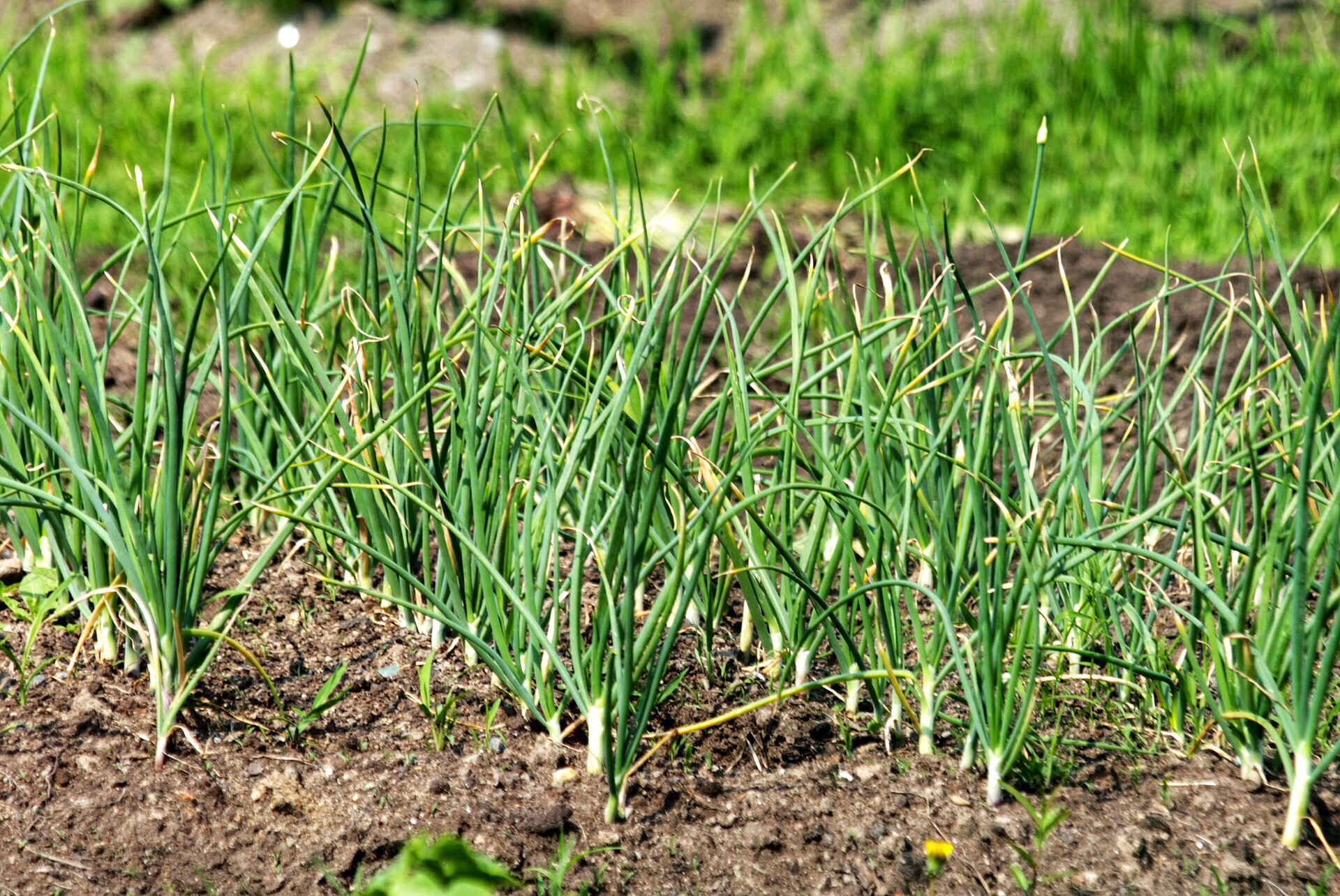
If you enjoy cooking with garlic in the kitchen, you should try growing garlic in the garden! Garlic is an easy to grow crop for the Kentucky garden because it doesn’t have a lot of disease and insect pressure. Garlic produces large amounts if gardeners plant a recommended variety, plant in the right location and in the correct way, and provide proper maintenance when needed.
In Kentucky, garlic grows as a biennial crop. Gardeners plant garlic cloves in October or early November in order to establish a good root system. Make sure to plant garlic in loose well-drained soil with plenty of organic material. Soils that do not drain well will cause rotting to form. If soil types are not ideal, look into installing raised bed gardens, which are good options for growing garlic.
There are two types of garlic to grow in Kentucky, which are soft-neck or hard-neck garlic. Soft-neck garlic does not produce a scape and due to the soft neck nature, gardeners or market growers can braid their stems. Hard-neck garlic produces an elongated flower stalk known as a scape, which then forms a flower at the top called a bulbil. When the flower forms, remove it so that the developing garlic bulb increases in size. Since hard-neck garlic has better cold-hardiness, it generally performs better in Kentucky gardens.


Purchase certified seed stock from a reputable garden or nursery source. Cultivars will differ greatly from other varieties according to clove arrangement, number of cloves, size of cloves, color, flavor, and skin tightness. It is important to buy the specific garlic variety early in advance to guarantee the desired variety. The popular varieties tend to sell out before other varieties.
Soft-neck garlic is referred to as Silverskin, Artichoke, or Italian garlic. California Early and California Late are the best represented varieties for soft-neck types. The hard-neck may be purple, purple striped or white. Hard-neck varieties include Roja, German Red, Valenica, and Continental.
After the first hard frost, gardeners will need to apply a 2-4 inch layer of clean straw to insulate and protect the developing bulbs from cold temperatures. In spring, when garlic begins actively growing, gardeners will need to apply fertilizer. Garlic is ready for harvest in July or early August when leaf tops begin to dry and bend toward the ground.

For more information about growing garlic, check out these University of Kentucky Cooperative Extension Service publications:
- Home Vegetable Gardening in Kentucky: http://www2.ca.uky.edu/agcomm/pubs/id/id128/id128.pdf
- Garlic & Elephant Garlic: http://www.uky.edu/ccd/sites/www.uky.edu.ccd/files/garlic.pdf
If you would like to watch more about growing garlic, see the links below from the Warren County Agriculture YouTube channel. Warren County Extension Agent for Horticulture Kristin Hildabrand discusses selecting garlic varieties and planting garlic on the Farm and Home Show. Click on the links below to see this information:
Selecting Garlic Varieties:
Planting Garlic:
Happy Gardening!
Kristin G. Hildabrand, Horticulture Extension Agent for Warren County


Leave a Reply